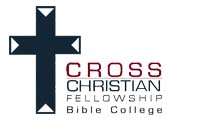A pastor shares guidelines to help.

Few [people] enter the pastorate with any concept of how many meetings they will attend. The pastorate is filled with meetings, and you will often lead them. Small group, one-on-one, and staff meetings occur every week. While they are important to prepare for, these kinds of meetings are generally simple to lead. Therefore, [I’ll address here] the larger meetings that take place with elders, deacons, the congregation, and committees. As you think about leading large meetings, keep the following guidelines in mind.
Set an agenda. An agenda is always helpful. It allows the participants in the meeting to know the plan for the meeting, which will hopefully inform discussion, halt unnecessary tangents, and provide overall structure. In the agenda, allot time for each item. Be realistic in that allotment but also conservative in the estimated time given. This helps to move the meeting along at a quicker pace. In my first pastorate, many elder meetings began at seven o’clock in the evening and didn’t finish until midnight. On most occasions this was unnecessary. They ran late because the meetings weren’t led well. It is unfair for the layman, who has to rise early in the morning and be at the factory or office by six o’clock, to be kept that late by church business when a well-ordered agenda could have prevented it. Respect the men and women you labor with by setting an agenda and sticking to it.
Place important issues early in the agenda. It is often helpful for the first item on the agenda (after prayer and Bible reading) to be a simple issue that allows the participants to make a decision after limited discussion. This sets the tone for the rest of the meeting’s action and engages individuals right away in the business at hand. After you have dealt with a few simple items, tackle the harder issues on the agenda. If difficult matters are left until the end of the meeting when individuals are tired, the discussion will be less productive and possibly even more contentious. However, there are times when it is better to place a hard issue at the end of a meeting. If it is a topic that you don’t think should have much dialogue or could be unnecessarily contentious, then placing it at the end can be a wise move. Participants still have the opportunity to speak, but they will often be less verbose.
Get to know Robert’s Rules of Order. In large meetings, Robert’s Rules of Order is almost essential for order and agreement. While small meetings don’t usually necessitate the rigid order of Robert’s Rules, it can be helpful when a decision needs to be made. For example, a discussion on a particular item extends for a long period of time as everyone in the room weighs in on the topic at hand. Intense dialogue has taken place, but no decision has materialized. In this situation, suggesting that someone make a motion provides an actual opportunity for a decision to occur. This also helps to halt the continued pontification of opinions that have already been mentioned three or four times. A good leader knows Robert’s Rules and when to implement them.
If you are the leader of the meeting, then lead. Meetings become tedious, long, unruly, and unproductive when the leader does not lead. This doesn’t mean you need to be dictatorial, but it does mean that those in the room need to know that you are leading. Express your opinion, come with an agenda, and be willing to correct errors in the conversation. However, you also need to know how to listen, when to allow others to take control of a conversation, when and if it is necessary to be more directive, and when it is better to allow the group to find its own way on a particular issue.
If a meeting is getting “bogged down” with an agenda item, don’t be afraid to be creative. When a difficult motion would benefit from more discussion or concerted prayer, then table the agenda item until the next meeting. A good meeting leader also knows when to move a contentious or weighty item to a subcommittee; ask for a report to the larger body with a recommendation. Smaller groups allow for simplified and often more helpful discussions.
Don’t always insist on your own way. As a leader, lead, but don’t demand. While you may serve as the leader, chairman, or moderator, multiple people are involved—and for good reason. Lead the meeting, but do so humbly.
Adapted from The New Pastor’s Handbook: Help and Encouragement for the First Years of Ministry by Jason Helopoulos (Baker Books, a division of Baker Publishing Group, 2015). Used with permission.
For more information on Robert’s Rules of Order Newly Revised, read Richard Hammar’s Church Law & Tax Report article on this topic.
This content is designed to provide accurate and authoritative information in regard to the subject matter covered. It is published with the understanding that the publisher is not engaged in rendering legal, accounting, or other professional service. If legal advice or other expert assistance is required, the services of a competent professional person should be sought. “From a Declaration of Principles jointly adopted by a Committee of the American Bar Association and a Committee of Publishers and Associations.”
Originally posted Here

